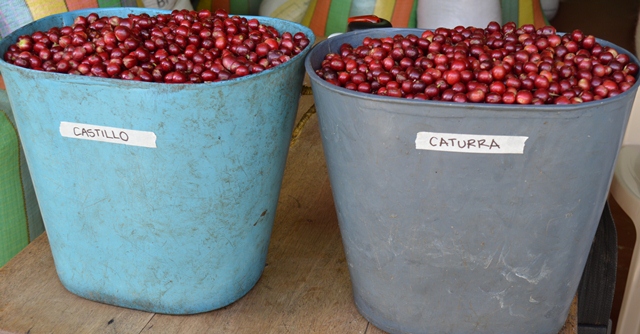Back in January, I described our plans to stage a side-by-side sensory analysis of Castillo and Caturra samples grown by participants in our Borderlands Coffee Project in Colombia. Originally, we had planned to do this exercise independently. But as we moved forward in our planning and began talking to more and more friends in coffee about what we were doing, we realized that the study–both the methodology and the results–have broad relevance for the entire coffee sector. We invited World Coffee Research to partner with us to help make the approach more rigorous and the results more robust, and we were delighted when WCR accepted.

Castillo and Caturra cherry harvested for the Colombia Sensory Trial, a collaboration bewteen CRS and WCR. CRS/Andrés Montenegro.
The collaboration, now known as the Colombia Sensory Trial, will revolve around two panels at the Intelligentsia Coffee lab in Chicago, the first in October and the second in January 2014. (Thanks, Intelli!)
Paul Songer of the Alliance for Coffee Excellence will lead the process. Confirmed panelists include:
- Aleco Chigounis, Red Fox Coffee Merchants
- Tim Hill, Counter Culture Coffee
- George Howell, George Howell Coffee
- Doug Langworthy, Starbucks Coffee
- Adam McClellan, Stumptown Coffee
- Geoff Watts, Intelligentsia Coffee and
- a-cupper-to-be-named-later, Keurig Green Mountain
For more information about our partnership with WCR on the Colombia Sensory Trial, read the press release here.
– – – – –
The Colombia Sensory Trial is supported by a grant from the Howard G. Buffett Foundation.


